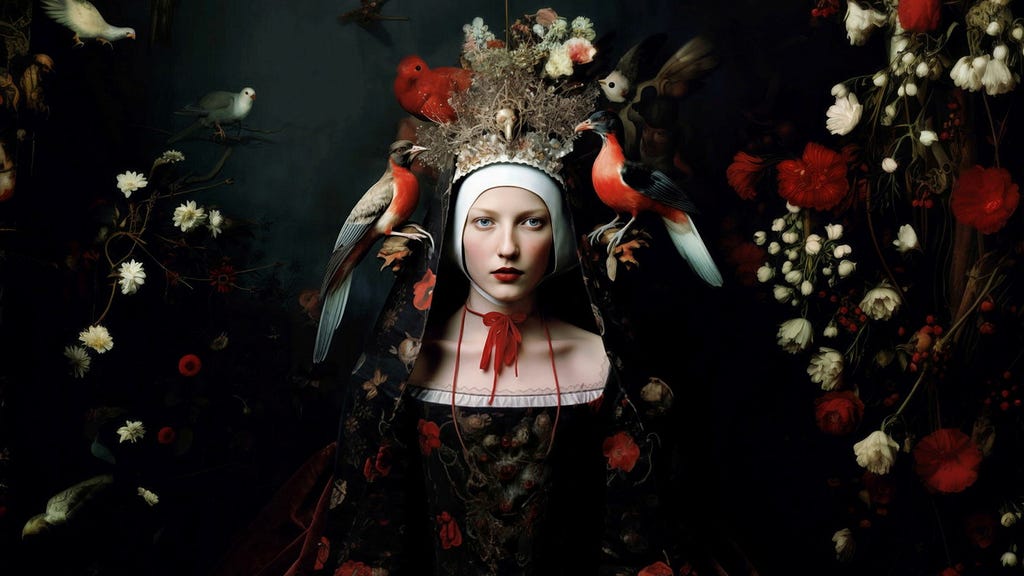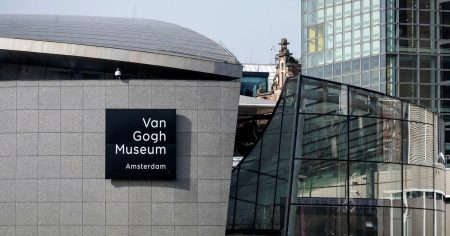The Historiska museet in Stockholm is hosting an exhibition titled ”Häxor” (Witches), focusing on the historical witch trials in Sweden. The exhibition, which runs until May 11th, utilizes AI technology alongside historical artifacts and storytelling to bring the tragic events of the 17th century to life for a contemporary audience. Artist Pompe Hedengren employs AI to generate portraits of the accused women, offering a visual representation of the individuals caught in the fervor of the witch hunts. While the AI-generated images effectively humanize the victims, the exhibition carefully contextualizes them to avoid confusion with actual period photographs. This blend of modern technology and historical narrative aims to create an immersive experience that resonates with today’s audiences.
The exhibition delves into the historical context of the witch trials, particularly the period known as ”Det Stora Oväsenet” (The Great Noise) between 1668 and 1676. During this time, nearly 300 women in Sweden were executed, not primarily for practicing magic, but due to widespread fear, misogyny, and the manipulative testimonies of young boys known as ”visgossar.” These boys held significant power to accuse innocent women, fueled by a societal climate of suspicion and superstition. Cecilia Düringer, a historian and podcast host, provides the historical narrative for the exhibition, exploring both individual stories of the accused and the broader societal factors that contributed to the witch hunts. This includes the influence of the infamous ”Malleus Maleficarum” (Hammer of Witches), a 15th-century treatise that played a significant role in the persecution of alleged witches across Europe.
The exhibition employs a variety of immersive techniques to engage visitors. Reconstructed period environments, such as a sockenstuga (parish meeting house), where trials took place, transport visitors back to the 17th century. Dramatic lighting and audio elements enhance the sense of atmosphere and suspense. The story of Gertrud Svensdotter, a woman accused of walking on water, serves as a central narrative thread, allowing visitors to follow her ordeal from accusation to trial. The exhibition culminates in a powerful representation of the execution site at Torsåker, where many women were beheaded and burned. The inclusion of a recently discovered Icelandic black magic book, primarily associated with men, provides an interesting counterpoint to the Swedish experience. This multi-faceted approach to storytelling aims to provide a deep and impactful understanding of the witch trial phenomenon.
”Häxor” also highlights the prevailing beliefs of the time, showcasing original artifacts and church paintings that illustrate the deeply ingrained belief in heaven and hell, good and evil. The exhibition, however, misses an opportunity to explicitly connect Hedengren’s more fantastical, Hieronymus Bosch-inspired AI images to the artistic depictions of Satan in historical artworks, such as altarpieces. The inclusion of these Bosch-esque images, without proper contextualization, risks reinforcing the fabricated narrative of orgies and devil worship often associated with the witch trials, rather than challenging these historical misconceptions.
The use of AI in a historical exhibition raises questions about the balance between artistic interpretation and historical accuracy. While the AI-generated portraits effectively humanize the victims, the exhibition’s reliance on this technology necessitates careful consideration of source criticism and artistic license. The exhibition aims to appeal to young adults, a demographic that requires a nuanced approach to information dissemination, balancing accessibility with critical thinking. While the exhibition’s creators acknowledge the fictionalized elements introduced by the AI, the visual impact of these images might overshadow the historical nuances for some viewers.
Overall, ”Häxor” is a visually compelling and engaging exhibition that effectively conveys the tragic history of the Swedish witch trials. The immersive environments, dramatic storytelling, and integration of AI technology create a captivating experience for visitors. However, the exhibition’s reliance on AI for visual representation requires careful consideration of its potential to blur the lines between historical accuracy and artistic interpretation. While the exhibition’s creators aim to educate and engage a younger audience, they also bear the responsibility of ensuring that the use of this powerful technology doesn’t inadvertently perpetuate historical misconceptions. The exhibition’s strengths lie in its immersive storytelling and emotional impact, while its weaknesses lie in the potential for misinterpretation of AI-generated content.














